Your How to lay a concrete slab for a water tank images are ready. How to lay a concrete slab for a water tank are a topic that is being searched for and liked by netizens now. You can Find and Download the How to lay a concrete slab for a water tank files here. Download all royalty-free images.
If you’re looking for how to lay a concrete slab for a water tank images information connected with to the how to lay a concrete slab for a water tank topic, you have pay a visit to the right blog. Our website frequently provides you with suggestions for downloading the highest quality video and picture content, please kindly hunt and locate more informative video content and images that fit your interests.
How To Lay A Concrete Slab For A Water Tank. If the tank is to be positioned in an area that is on a slope then the thickness of the slab is to be increased and the mesh to be a higher grade. Say 8 diameter and 13 tall and resting on 4 legs you have an 11000 lb load at each point. Rainwater Tank Installation on CONCRETE SLAB Concrete Slabs for rainwater tank installation must be a minimum 25mpa and 100mm thick with F62 steel mesh halfway through the concrete. Spread it out and then give the boxing timber a tap with your hammer to settle the concrete and get rid of any air bubbles.
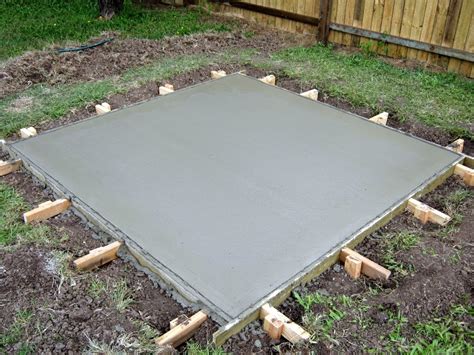 Base Preparation Designer Tanks From designertanks.com.au
Base Preparation Designer Tanks From designertanks.com.au
Construction of a concrete base needs a minimum of 100mm thick concrete and F62 mesh on a flat level area. Do I put the paving back or lay down a concrete slab or just fill it up with soil and compact it. Make sure your base is flat and level so that the base of the tank is fully supported. If using lid as a slab. Its important not to over-excavate only dig the required cut out and ideally a clean cut hole is best for installation of tank. Next youll need to.
It should be screeded flat and level with no high or low spots.
A concrete slab base is the most suitable base for your AQUAPLATE rainwater tank. If using lid as a slab. Cost crusher dust and sand are cheaper than concrete. Start at one side of the pad and pour the concrete batch onto the pad. Rainwater Tank Installation on CONCRETE SLAB Concrete Slabs for rainwater tank installation must be a minimum 25mpa and 100mm thick with F62 steel mesh halfway through the concrete. Machine mixing - this is better for larger quantities.
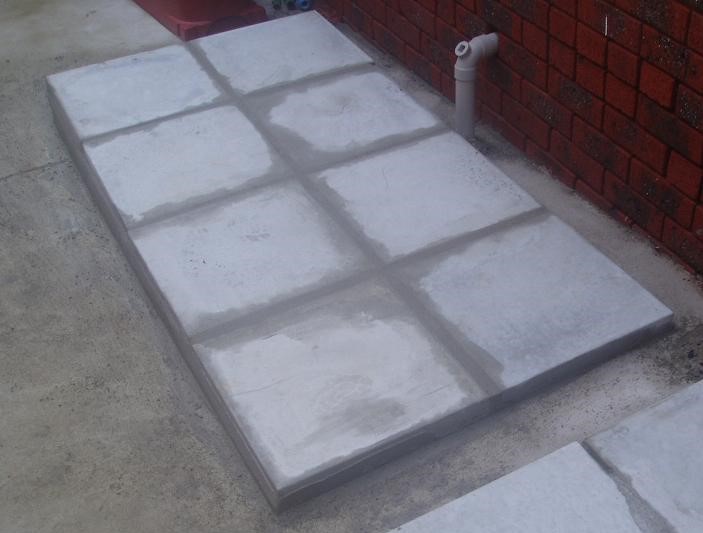 Source: designertanks.com.au
Source: designertanks.com.au
Start at one side of the pad and pour the concrete batch onto the pad. Alternatively rent a small powered mixer from your home center. Once poured let the slab cure for at least 72 hours before placing the fuel tank on it. If it is standing up on end. Completely fill tank with water first then backfill the hole with compacted crusher dust and cement powder.
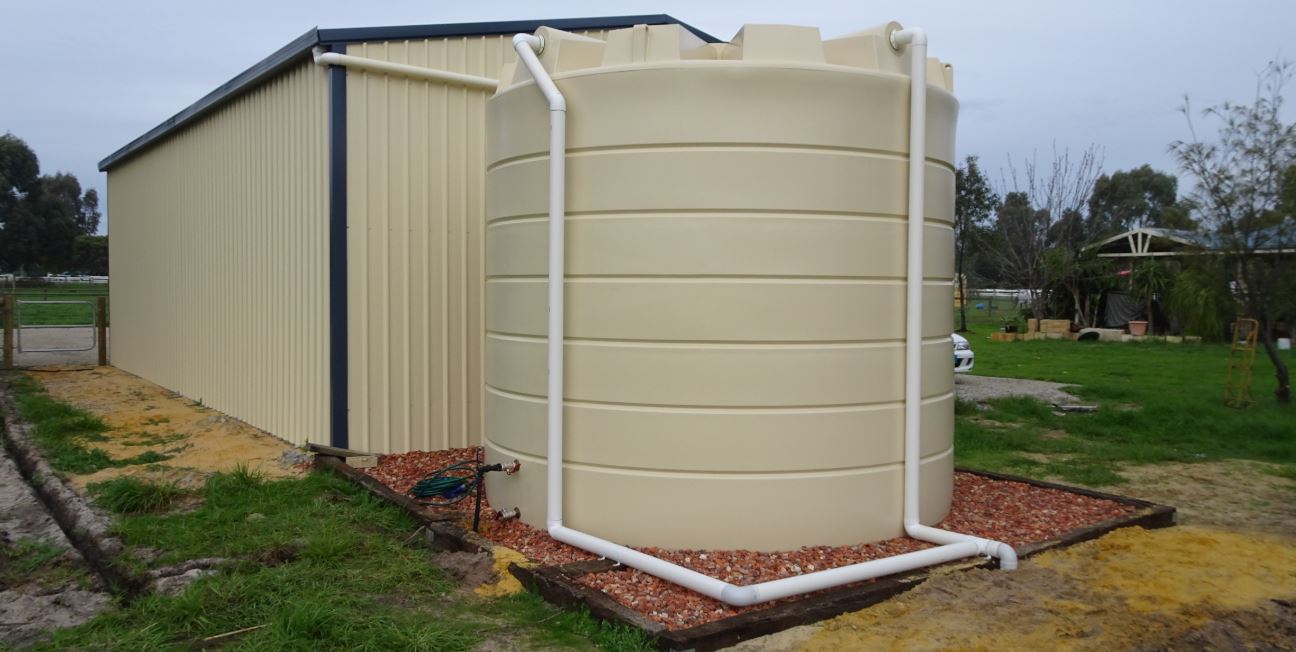 Source: agriculture.coerco.com.au
Source: agriculture.coerco.com.au
Machine mixing - this is better for larger quantities. The finished surface should have a smooth troweled finish. You can purchase concrete pavers in various sizes so once you have worked out your tank size configure the number of pavers and size to suit. Laying Out the Piping. Completely fill tank with water first then backfill the hole with compacted crusher dust and cement powder.
 Source: rainharvest.co.za
Source: rainharvest.co.za
You could then use a thinner slab and just thicken the concrete to around 12 properly reinforced at each bearing point. Move the chute back and forth and have the driver pull forward as you go. Use hardwood decking with gaps no greater than 10mm. The total load of the tank water and concrete is approximately 700 kips. Rainwater Tank Installation on CONCRETE SLAB Concrete Slabs for rainwater tank installation must be a minimum 25mpa and 100mm thick with F62 steel mesh halfway through the concrete.
 Source: youtube.com
Source: youtube.com
August 27 2013 4 Comments. A concrete slab base is the most suitable base for your AQUAPLATE rainwater tank. Before during and after excavation. Machine mixing - this is better for larger quantities. The water tanks is 65000 gallons capacity and has 21 feet diameter.
 Source: rainharvest.co.za
Source: rainharvest.co.za
With premixed cement you need only add the specified amount of water and mix. Rainwater Tank Installation on CONCRETE SLAB Concrete Slabs for rainwater tank installation must be a minimum 25mpa and 100mm thick with F62 steel mesh halfway through the concrete. Once poured let the slab cure for at least 72 hours before placing the fuel tank on it. The slab should have a troweled finish and should be screed flat and be level with no high or low spotsThe base of the tank needs to be supported across the entire surface. Youll want to measure and mark where each pipe will go making sure everything is aligned correctly.

With premixed cement you need only add the specified amount of water and mix. Machine mixing - this is better for larger quantities. The total load of the tank water and concrete is approximately 700 kips. Mix it in a large wheelbarrow using a shovel or hoe. Spread it out and then give the boxing timber a tap with your hammer to settle the concrete and get rid of any air bubbles.
 Source: tankworldtas.com.au
Source: tankworldtas.com.au
Laying Out the Piping. Completely fill tank with water first then backfill the hole with compacted crusher dust and cement powder. Mix it in a large wheelbarrow using a shovel or hoe. Use hardwood decking with gaps no greater than 10mm. The finished surface should have a smooth troweled finish.
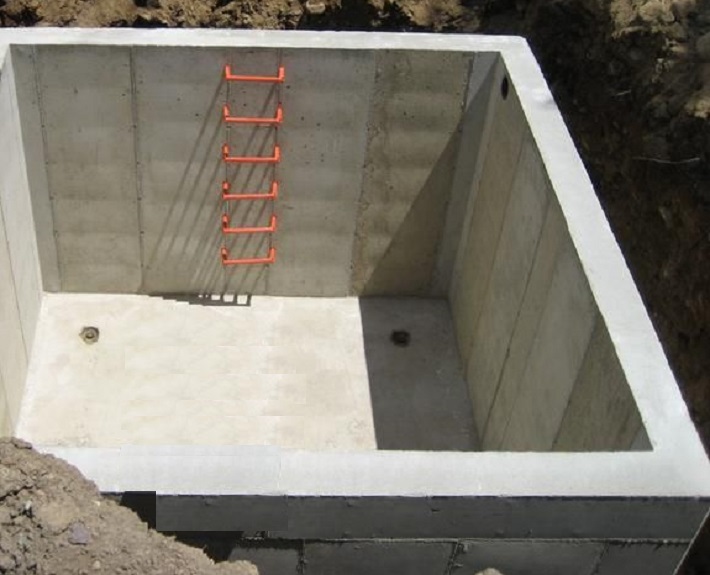 Source: safeworkmethodofstatement.com
Source: safeworkmethodofstatement.com
I am using 12 inches thick by 25 feet square concrete slab pad to support the tank. Alternatively rent a small powered mixer from your home center. Spread it out and then give the boxing timber a tap with your hammer to settle the concrete and get rid of any air bubbles. You can purchase concrete pavers in various sizes so once you have worked out your tank size configure the number of pavers and size to suit. Youll want to measure and mark where each pipe will go making sure everything is aligned correctly.
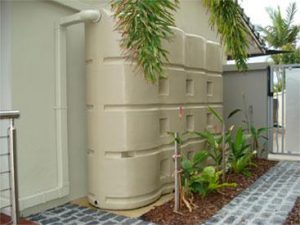 Source: rainwatertanksdirect.com.au
Source: rainwatertanksdirect.com.au
Regardless of the materials you choose the ground must be compacted before laying the concrete or crusher dust and the base must be carefully laid and finished to ensure it is flat. Regardless of the materials you choose the ground must be compacted before laying the concrete or crusher dust and the base must be carefully laid and finished to ensure it is flat. Construction of a concrete base needs a minimum of 100mm thick concrete and F62 mesh on a flat level area. If it is a rectangular tank. Concrete paving compacted soil.
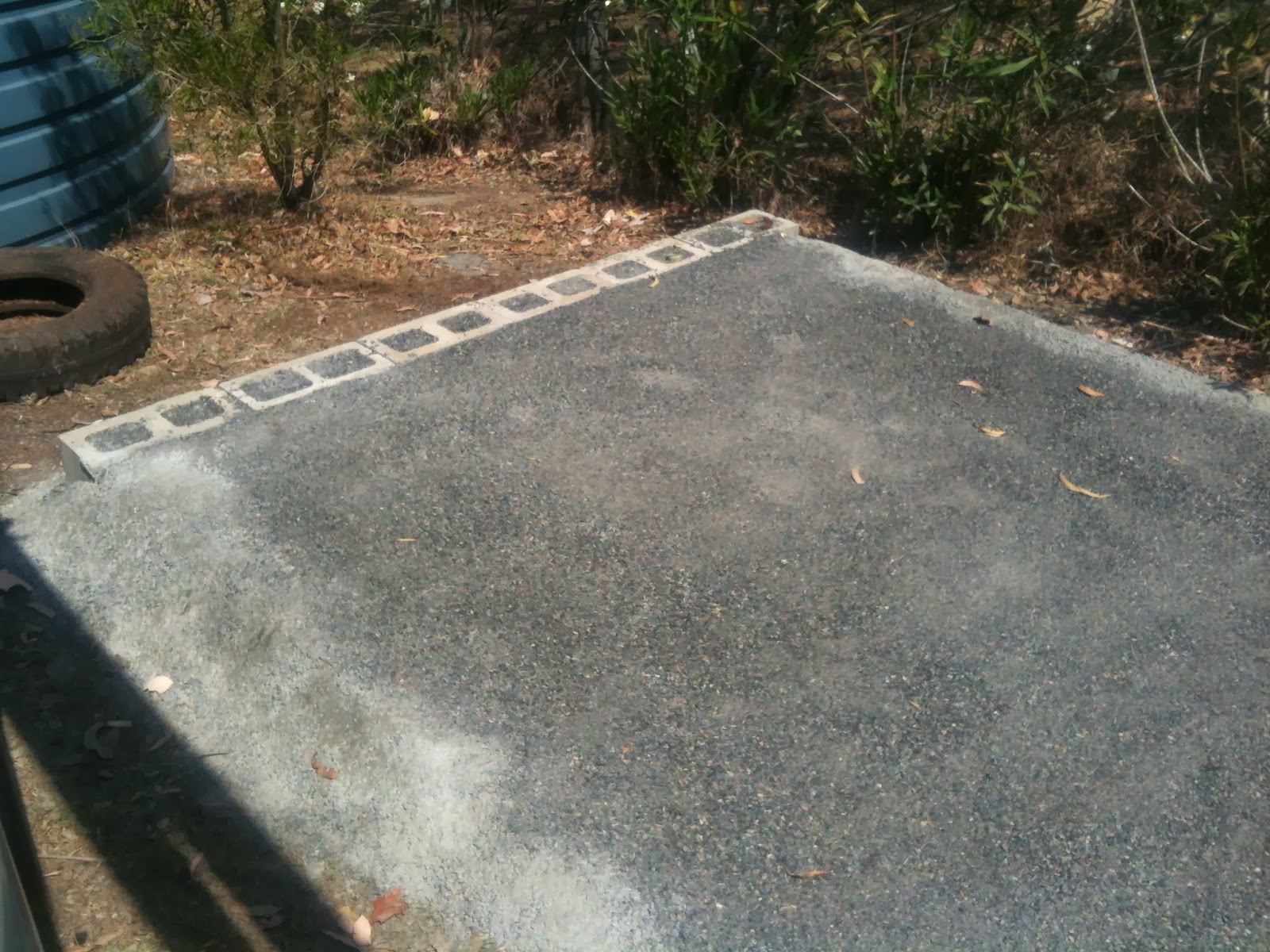
You will need to remove any vegetation first then lay and level 80mm of sand and cement mix you can purchase these in premixed 20kg bags and then place your pavers tightly together. Drilling Holes for Pipe Anchors. Its important not to over-excavate only dig the required cut out and ideally a clean cut hole is best for installation of tank. We also suggest that you erect a fence for safety reasons around the tank. Completely fill tank with water first then backfill the hole with compacted crusher dust and cement powder.
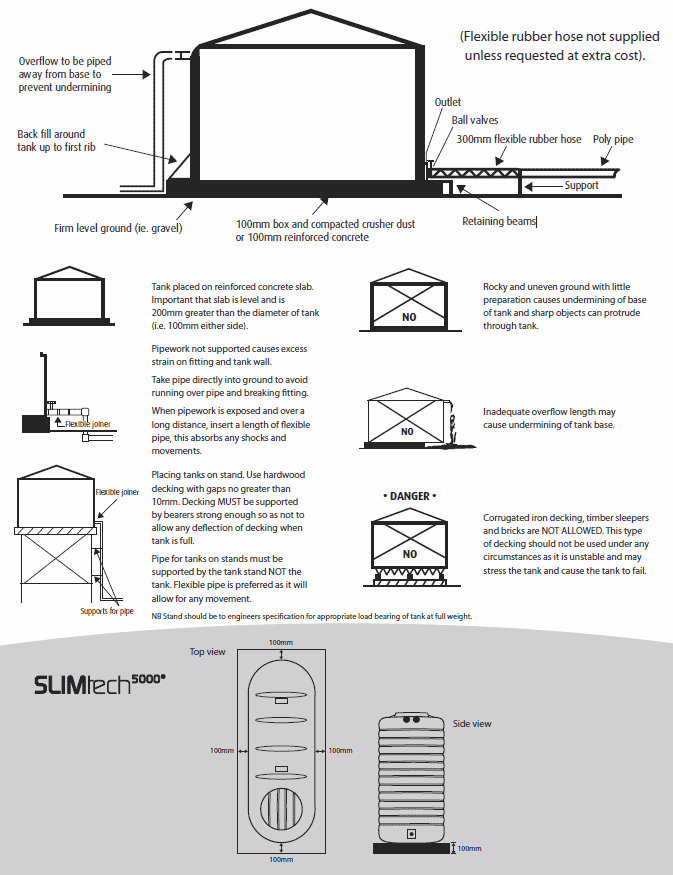 Source: clarktanks.com.au
Source: clarktanks.com.au
We also suggest that you erect a fence for safety reasons around the tank. When installing a 5000l water tank at home what base does one use. Dig out a minimum of 100mm or 4 inches of dirt soil make sure the hole dug is flat and level. Spread the concrete evenly and a touch higher than the form with a concrete placerrake. Once poured let the slab cure for at least 72 hours before placing the fuel tank on it.
 Source: designertanks.com.au
Source: designertanks.com.au
It should be screeded flat and level with no high or low spots. I have to lift some paving to level it out for my tank install and to get some height only about 400mm to be able to fit a bucket under the tank-tap. Cost crusher dust and sand are cheaper than concrete. If it is a rectangular tank. Do I put the paving back or lay down a concrete slab or just fill it up with soil and compact it.
 Source: pinterest.com
Source: pinterest.com
Moisten the surface of the pad with water. Once poured let the slab cure for at least 72 hours before placing the fuel tank on it. Rainwater Tank Installation on CONCRETE SLAB Concrete Slabs for rainwater tank installation must be a minimum 25mpa and 100mm thick with F62 steel mesh halfway through the concrete. Machine mixing - this is better for larger quantities. Make sure your base is flat and level so that the base of the tank is fully supported.
 Source: youtube.com
Source: youtube.com
Completely fill tank with water first then backfill the hole with compacted crusher dust and cement powder. Mix it in a large wheelbarrow using a shovel or hoe. Thus an appropriate foundation that can carry the weight of the tank when full is crucial. Put in a bed of sand packing or river sand about 25mm to 50mm thick. Its important not to over-excavate only dig the required cut out and ideally a clean cut hole is best for installation of tank.
 Source: youtube.com
Source: youtube.com
Pour the concrete in small sections. Moisten the surface of the pad with water. If it is a rectangular tank. Ensure that the surrounding soil left in the walls of the hole is solid leaving a 150 200 mm gap to allow positioning the tanks and back-filling with sand or metal dust stabilised with cement dust. August 27 2013 4 Comments.
 Source: youtube.com
Source: youtube.com
Tank stands are another option for the tank base but must be strong enough to hold the weight of the tank when full. Bluestone dust is also acceptable just ensure it is well packed down. Take this into account when. Repeat the procedure and. Moisten the surface of the pad with water.
 Source: youtube.com
Source: youtube.com
Finally water the pavers and butter up the edges. Alternatively rent a small powered mixer from your home center. Its important not to over-excavate only dig the required cut out and ideally a clean cut hole is best for installation of tank. The total load of the tank water and concrete is approximately 700 kips. Repeat the procedure and.
 Source: youtube.com
Source: youtube.com
The water tanks is 65000 gallons capacity and has 21 feet diameter. 24m deep if placing slab on tank lid calculate your slab thickness on top of tank x 27m wide x 27m long. It should be screeded flat and level with no high or low spots. Tamp the surface of the concrete with a wooden trowel. Repeat the procedure and.
This site is an open community for users to do submittion their favorite wallpapers on the internet, all images or pictures in this website are for personal wallpaper use only, it is stricly prohibited to use this wallpaper for commercial purposes, if you are the author and find this image is shared without your permission, please kindly raise a DMCA report to Us.
If you find this site value, please support us by sharing this posts to your preference social media accounts like Facebook, Instagram and so on or you can also save this blog page with the title how to lay a concrete slab for a water tank by using Ctrl + D for devices a laptop with a Windows operating system or Command + D for laptops with an Apple operating system. If you use a smartphone, you can also use the drawer menu of the browser you are using. Whether it’s a Windows, Mac, iOS or Android operating system, you will still be able to bookmark this website.






